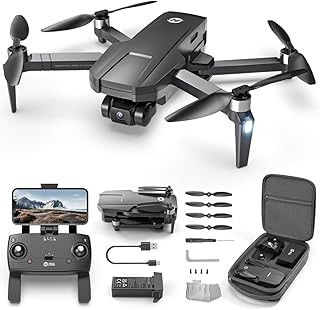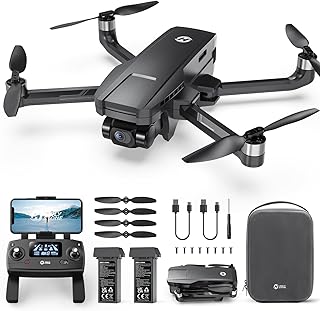Holy Stone Drones and the Law: What You Need to Know
Flying a Holy Stone drone, or any drone for that matter, requires adhering to a set of rules and regulations. These are designed to ensure safe and responsible operation for everyone. Here's a breakdown of the key regulations:
1. Federal Aviation Administration (FAA) Regulations:
* Registration: All drones weighing over 0.55 pounds (250 grams) must be registered with the FAA. You can register online through the FAA website and receive a unique registration number.
* Remote Pilot Certificate: For commercial drone operations (for profit or business purposes), you need to obtain a Remote Pilot Certificate (formerly known as Part 107 license). This requires passing an exam and adhering to specific training requirements.
* Operating Limits:
* Maximum Altitude: 400 feet above ground level (AGL) is the maximum altitude permitted, unless you obtain a special exemption.
* Flight over people: Generally not permitted unless you meet specific conditions and have the necessary authorizations.
* Flight near airports: Stay clear of airports and controlled airspace. You can use the B4UFLY app to check airspace restrictions.
* Flight over private property: Always obtain permission from the landowner before flying over their property.
* Other Restrictions:
* Operating only within line of sight: You must always be able to see your drone and maintain visual contact.
* No drone flying while intoxicated: Operating a drone under the influence of drugs or alcohol is illegal.
* Responsibility for your actions: You are responsible for any damage or injury your drone may cause.
2. Local Regulations:
* City and County Ordinances: Many cities and counties have their own drone regulations. These can vary significantly, so it's crucial to research and comply with local laws in your area.
* Private Property Restrictions: Some businesses or private properties may have their own rules about drone flights, even if they are within the permitted airspace. Always check for signs or local regulations.
3. Best Practices for Responsible Drone Operation:
* Understand the Weather: Avoid flying in strong winds, rain, or fog.
* Respect Privacy: Don't fly over people's private property without their permission.
* Stay Aware of Surroundings: Be mindful of obstacles and potential hazards.
* Follow the "Golden Rule": Fly responsibly and consider others when making your flight decisions.
4. Resources for More Information:
* FAA website: [https://www.faa.gov/uas/](https://www.faa.gov/uas/)
* FAA Dronezone: [https://www.faa.gov/uas/dronezone/](https://www.faa.gov/uas/dronezone/)
* B4UFLY app: [https://www.faa.gov/uas/dronezone/b4ufly/](https://www.faa.gov/uas/dronezone/b4ufly/)
By understanding and adhering to these laws and regulations, you can enjoy the benefits of flying your Holy Stone drone safely and responsibly.


